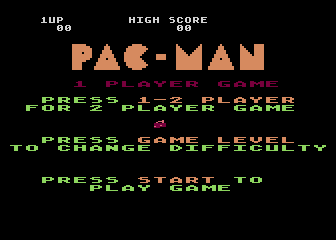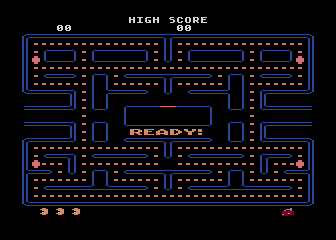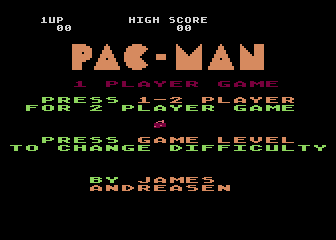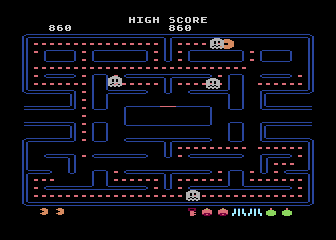|
|
Pac-Man
|
Name:
|
Pac-Man |
 |
| Company: | Atari | |
|
Model #:
|
CX-5208 | |
|
Programmers:
|
Atari 8-Bit Version: Joe
Helleson (Roklan) Atari 5200 Port: James Andreasen (Programmer) & Alan Murphy (Graphics) |
|
| Year: | 1982 | |
|
Released?
|
Yes
|
|
|
Notes:
|
The 5200 version contains the intermissions missing from the 400/800 version |
A game that needs no introduction, Pac-Man is the single most popular video game in history. Originally called Puckman, the name was changed at the last minute due to the fact that the middle section of the 'P' could be scratched away making the name into a swear word (use your imagination). The character Pac-Man was born from a pan of pizza with one slice missing. When Toru Iwatani (programmer of the original arcade game) gazed down at the pizza, it dawned on him... a circle with a wedge missing for a mouth... and so, Pac-Man was born.
Although the 2600 version of Pac-Man was a colossal disappointment, the 5200 version is actually pretty close to the arcade game. The maze may be stretched horizontally (as it is in all home versions), but the gameplay remains true to the original. The 5200 version even included the intermissions between rounds which was even missing from the 400/800 version due to space limitations. The 5200 version also cleans up a few bugs present in the original 8-bit release, adds some extra sounds, and plays a little faster. The 5200 version also has a hidden easter egg that can be accessed by typing 0,7,2,2,6,2,6 on the title screen (which spells out PacMan). The 400/800 version did not have this easter egg since it was programmed by a different person.
While the 5200 version is superior to the 8-bit version is most ways, there's one place it falls down. The 5200's non-centering sticks make the precise movements required in the game very difficult, making the whole game harder than it needs to be. Overshooting tunnel entrances and ramming into ghost monsters become an all too common occurrence. The best way to overcome this problem is with a third-party joystick or a Masterplay interface. Once the control issues have been taken care of, it becomes obvious why the 5200 was called the home arcade machine.
On an interesting side note Atari decided to replace the Galaxian symbol from the arcade game (the fruit for rounds 9 and 10) with the Atari Fuji symbol. This is most likely because the Galaxian symbol was still under copyright form Namco (and a little extra Atari marketing never hurts). Pac-Man eventually replaced Super Breakout as the pack-in game for the 5200 during the last year of its life. This was a much better choice since Pac-Man was still huge at the arcades and Super Breakout was practically an antique. Whether it helped sell more 5200's is anyone's guess.
| Version | Cart Text | Description |
| 10/5/82 | Pac Man Demo | Kiosk demo |
| 6/23/83 | Pac Man EPROM Cartridge | Final version |



